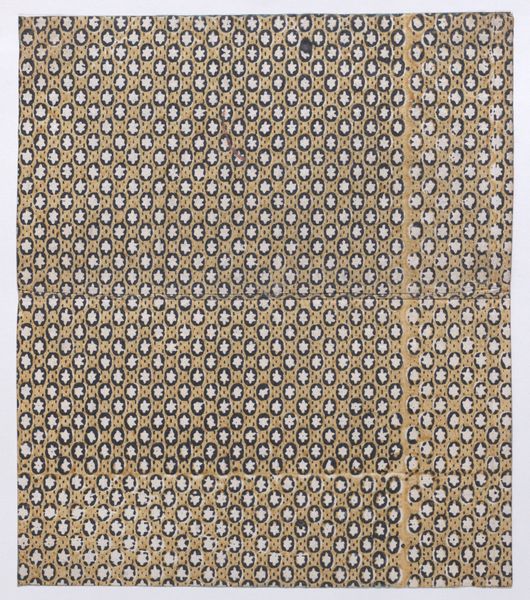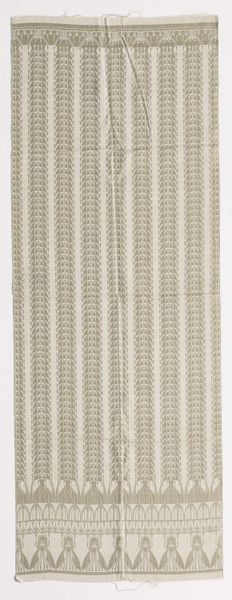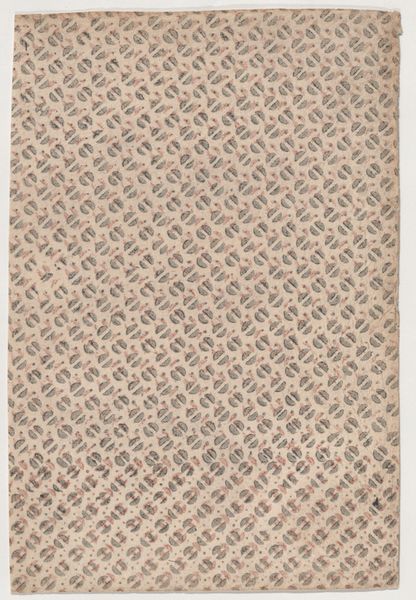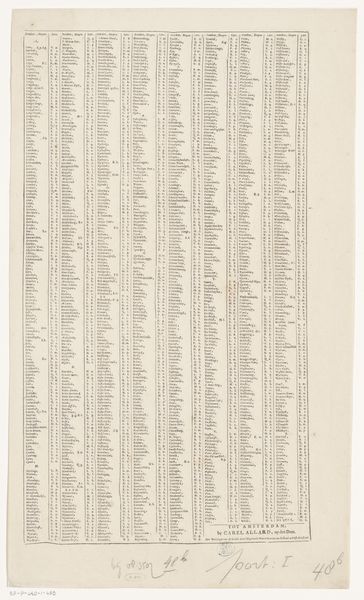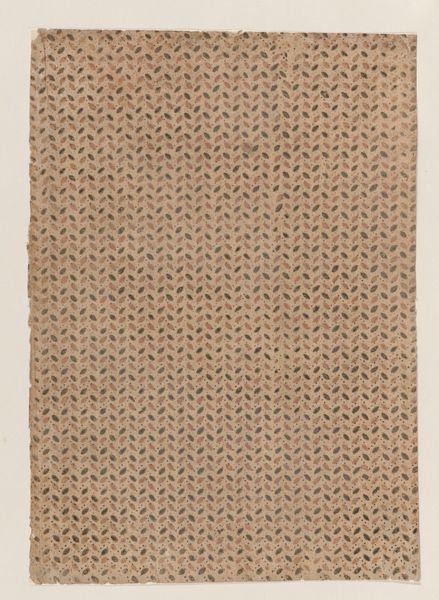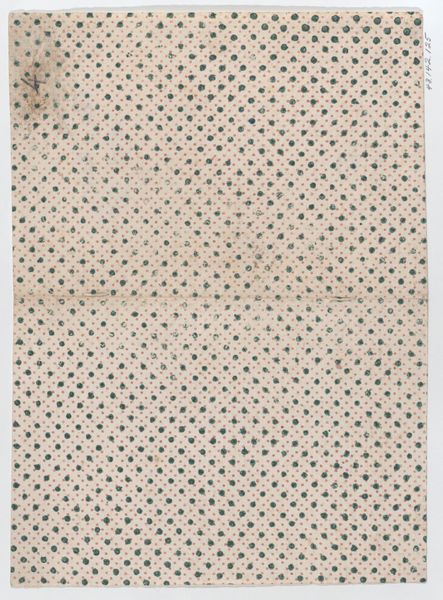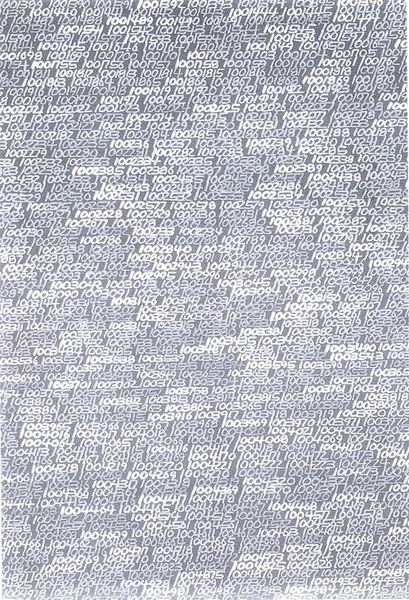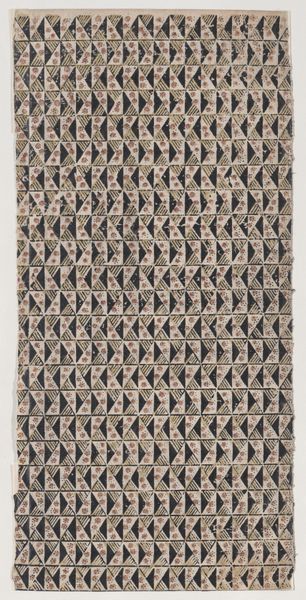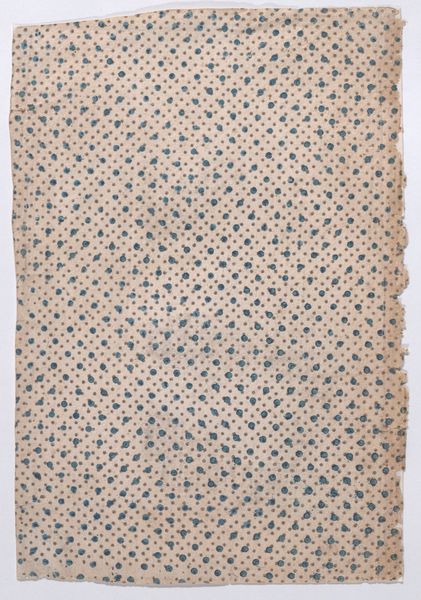
textile
#
natural stone pattern
#
arts-&-crafts-movement
#
pattern
#
textile
#
fashion and textile design
#
pattern design
#
fabric design
#
repetition of pattern
#
vertical pattern
#
pattern repetition
#
textile design
#
imprinted textile
#
layered pattern
Dimensions: height 159.0 cm, width 58.0 cm
Copyright: Rijks Museum: Open Domain
Curator: I find this textile so calming, almost meditative. What’s your first impression? Editor: It strikes me as ghostly. Like a faded memory imprinted on fabric, especially with those muted grays. It's a study in restrained elegance, would you agree? Curator: Very much so. This "Wandbespanning," or Wall Covering, was created between 1911 and 1915 by Chris Lebeau, who had quite the knack for crafting exquisite designs. And it's a beautiful example of the Arts and Crafts movement that favored handcrafted items over mass production. Editor: And how fascinating, too. All these repeated vertical patterns—almost like standing in a silent forest of abstracted trees. I'm captivated by this blend of natural motifs within an industrial grid. It has rhythm to it. Curator: Rhythm indeed! The symbolism gets even deeper, when you notice that top frieze which consists of little sitting figures or goddesses beneath stylized arches. Almost an invocation to whoever dwells within a room decorated with it! Editor: I can see it; those arches could certainly represent thresholds between worlds or planes of existence, linking daily life to something transcendent or idealized. Does this artwork carry specific references from Lebeau's personal iconography? Curator: Lebeau had his own blend. He pulled ideas from many belief systems and fused nature, design, and spirituality into something quite intimate, I think. What resonates for you as a potent image or symbol? Editor: Beyond that spectral color palette, those almost ethereal rows seem both firmly rooted to order and delicately unfurling. There is a duality: the rigidity of the imposed grid, against the growth and flow these shapes represent. Like holding opposing elements in balance. Curator: That balancing act probably explains part of why this resonates so strongly. It offers a space where logic and whimsy hold hands. After looking at this wall hanging, you think you can hear that forest, a whisper of the world and time woven together. Editor: And through that, it shows how seemingly simple shapes—lines and rudimentary forms, repeating themselves endlessly—can generate something that holds deeper significance when touched by vision and thoughtful intent. Curator: Right. Thanks to Lebeau and his weaving of vision, history, and heart, the world is, as is often said with textile design, wonderfully richer and far more fascinating than we tend to see it on the surface.
Comments
No comments
Be the first to comment and join the conversation on the ultimate creative platform.

